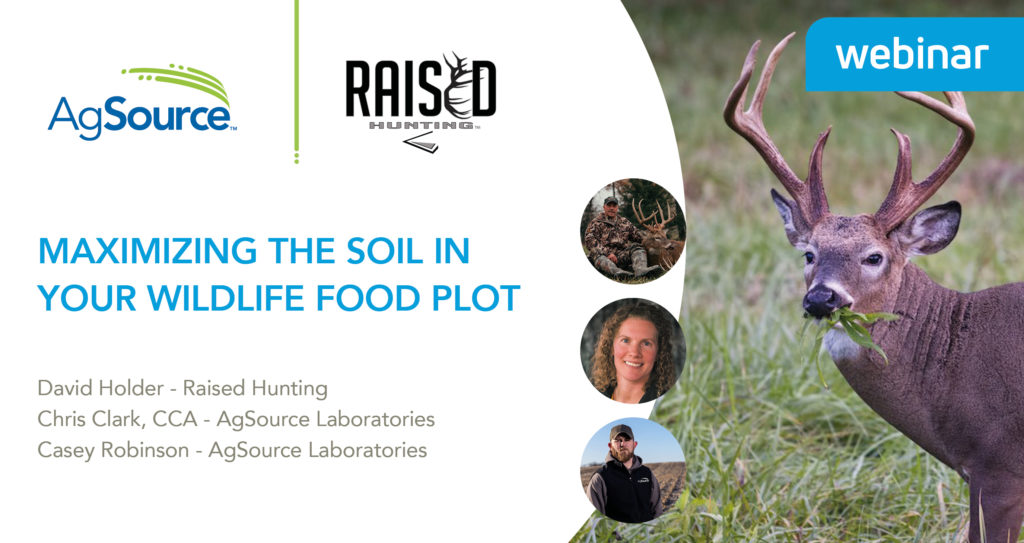What You Need to Know Before Building Your Wildlife Food Plot
For many wildlife enthusiasts, hunting season has no parameters. You spend months planning where to set up the hunting stand, keeping a keen eye on the trail cam for that prized buck. But if you’re wondering how to take your hunting game to the next level this year, food plots could be the answer!
Here are three key points to consider for building successful wildlife food plots.
Wildlife needs
Whitetail deer and most wildlife have three primary needs: water, nutritious forage and cover. Keep this in mind as you plan where to establish a food plot.
They get the most critical of the three, water, from a variety of sources including vegetation, metabolism and surface water. Deer, however, rarely reach their water needs on vegetation and metabolism alone. Therefore, the ideal deer habitat has a reliable and accessible surface water source.
A whitetail deer’s diet is relatively simple. Their diet changes as the plants change seasonally, but shoots and leaves of woody browse are a major staple. Plentiful deer habitats offer all food types including forbs, browse and mast. Ideally, the habitat will contain brushy and open areas with 40 to 60 percent in clearings.

Deer use cover to protect themselves from weather conditions and predators. Mature bucks are masters of their terrain and prefer habitats with abundant cover to bed and escape danger. Abundant cover also aids does and fawns in springtime. When scoping out a spot for your food plot, ensure there is plenty of cover nearby.
Timing is everything
Having the plots ready with forages easily accessible at the right time of year will not only attract wildlife, but also increase your odds of bagging that champion buck.
The most critical seasonal periods for whitetail deer utilizing food plots are summer, when adult females are lactating and bucks are growing antlers, and late winter, when food quality and quantity is low. Food plots should be planted in July or early August to be ready to hunt October through January.
In the spring and early summer months naturally occurring deer browse, like leaves, fruits or shrubs provide a plentiful supply of protein and complex carbohydrates. In fall and early winter, wildlife body fat stores increase with a variety of mast crops high in carbohydrates. These include persimmons and acorns.
Soil testing is at the core of a successful food plot
Establishing a successful food plot starts with understanding your soil. Just like any other crop, food plots need nutrients. They will not produce the food or protein needed to attract game without it. Gain insight into your soil and create an environment for wildlife to thrive with a soil test.
AgSource’s PlotWise Test Kit provides insights into your soil’s true nutrient status such as whether or not your soil requires lime or fertilizer and how much to apply for optimal soil and plant health. The test measures eight essential key metrics for optimal food growth with precise recommendations tailored to the type of plot you’re growing.
Interested in learning more about building a wildlife food plot? Watch our ‘Maximizing the Soil in Your Wildlife Food Plot’ webinar to hear from David Holder, Raised Hunting Founder and CEO, on how wildlife food plots changed hunting for him and his top tips for first-time food plotters.




